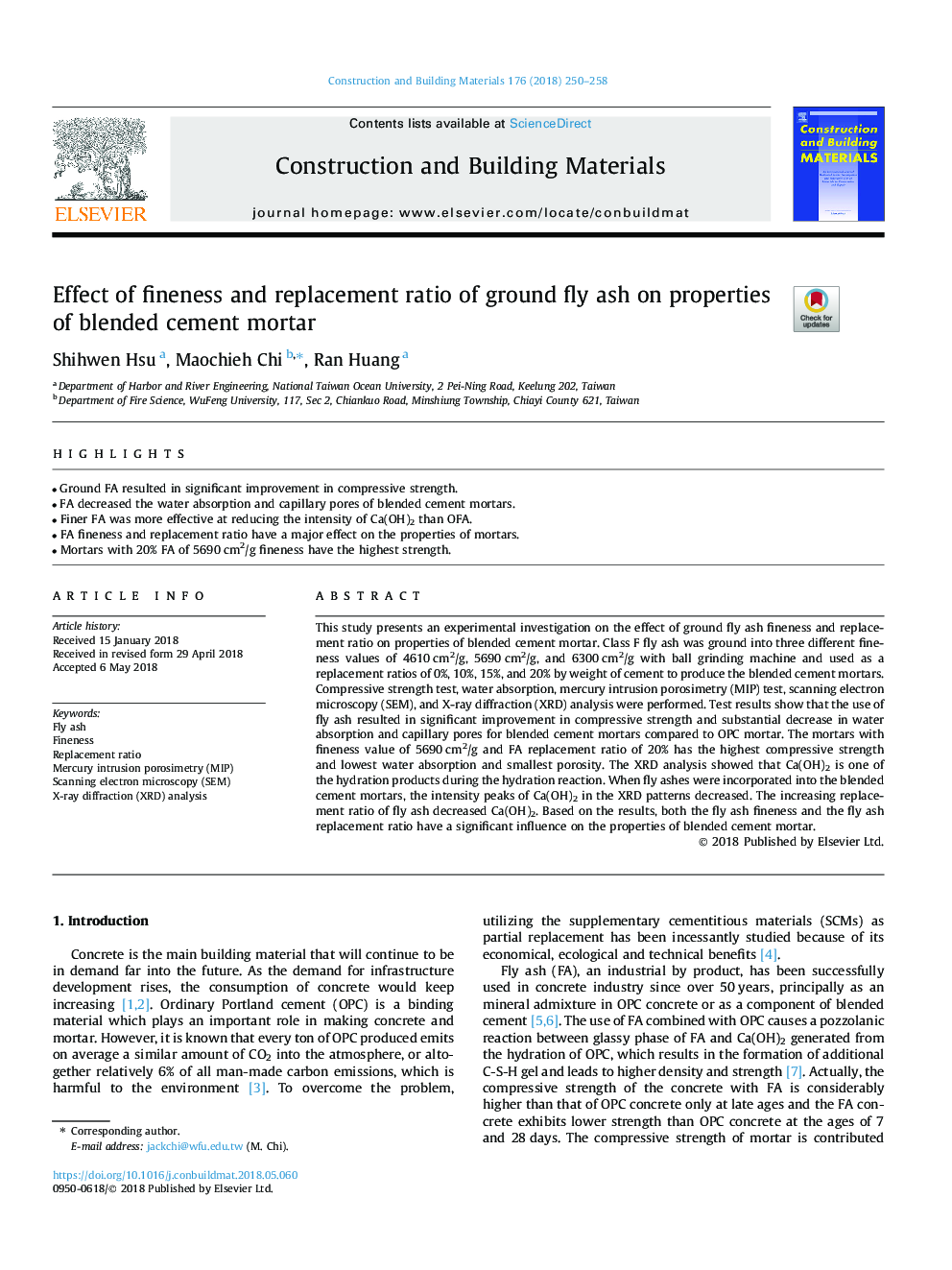| Article ID | Journal | Published Year | Pages | File Type |
|---|---|---|---|---|
| 6713103 | Construction and Building Materials | 2018 | 9 Pages |
Abstract
This study presents an experimental investigation on the effect of ground fly ash fineness and replacement ratio on properties of blended cement mortar. Class F fly ash was ground into three different fineness values of 4610â¯cm2/g, 5690â¯cm2/g, and 6300â¯cm2/g with ball grinding machine and used as a replacement ratios of 0%, 10%, 15%, and 20% by weight of cement to produce the blended cement mortars. Compressive strength test, water absorption, mercury intrusion porosimetry (MIP) test, scanning electron microscopy (SEM), and X-ray diffraction (XRD) analysis were performed. Test results show that the use of fly ash resulted in significant improvement in compressive strength and substantial decrease in water absorption and capillary pores for blended cement mortars compared to OPC mortar. The mortars with fineness value of 5690â¯cm2/g and FA replacement ratio of 20% has the highest compressive strength and lowest water absorption and smallest porosity. The XRD analysis showed that Ca(OH)2 is one of the hydration products during the hydration reaction. When fly ashes were incorporated into the blended cement mortars, the intensity peaks of Ca(OH)2 in the XRD patterns decreased. The increasing replacement ratio of fly ash decreased Ca(OH)2. Based on the results, both the fly ash fineness and the fly ash replacement ratio have a significant influence on the properties of blended cement mortar.
Keywords
Related Topics
Physical Sciences and Engineering
Engineering
Civil and Structural Engineering
Authors
Shihwen Hsu, Maochieh Chi, Ran Huang,
